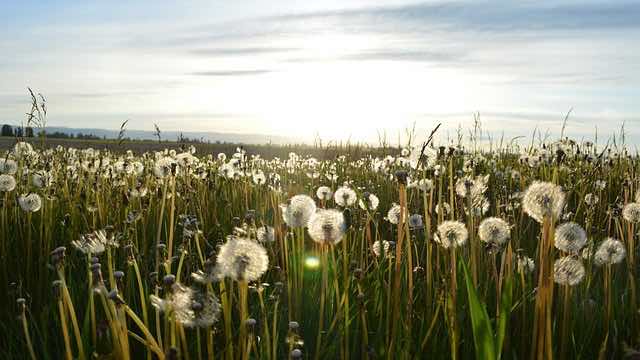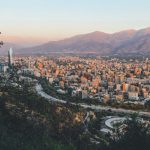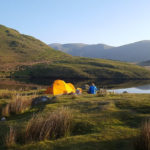As an Amazon Influencer, we earn from qualifying purchases you might make if you click any of the links on this page.
As an adventurer, one principle you learn early is to leave things like you found them, pack in and pack out, and those similar principles that help us preserve the areas we like to visit. It’s not enough just to have an adventure; we want to share those adventures with others and make sure nature is preserved the way we first found it.

The thing is, those same principles need to extend to what we do in our everyday lives. One of the most common ways to share your adventures is through blogging. How often do we think about how choosing a domain name, setting up hosting, and designing your website will have on the environment and the world around us?
The answer is complex, and it involves being just as conscientious when we write a blog as when we take a backpacking trip or race down through river rapids on a raft. We need to think about leaving the world how we found it, and there are some simple ways we can safeguard the earth when we chronicle our amazing journeys.
Choose Your Providers Wisely
Where are you buying your domain name? How is your site being hosted? How ‘green” is the person or company designing your website? What difference does all of this make? The answer is a huge difference. Those giant servers that hold the website and the data we all store in the cloud take up a huge amount of energy. Where does that energy come from?
Fortunately, many of the larger hosting companies use server farms created by Amazon, Google, Oracle, and others who, in the interest of saving money and the environment, use renewable energy to power these server farms. Many have their own solar panel fields and contribute the extra power they generate to local power grids.
The type of hosting you choose matters too. Shared hosting is when your site is hosted with several others on a single server. Dedicated hosting is when you have a server dedicated just to your website. If you have enough traffic, this makes sense, but a dedicated host takes more power and is also more expensive. Don’t use this option unless you really need that capability, and choose a host that offers both options as needed.
You can design your own website with the many templates available today, but you may not have the skills needed to make a truly great site. If you do hire someone, ask them questions about their commitment to the environment and use of clean energy to run their business. Try to work with those companies who are dedicated to environmentally conscious practices.
Use Alternative Energy
Of course, one of the best things you can do to help the environment when you’re adventure blogging is to use alternative energy sources yourself. There are foldable solar panels you can carry in your backpack to charge things like your phone and laptop when you are carrying them on your adventure. These can be used at home as well, making the writing you are doing truly “clean.”
When traveling, use environmentally friendly transportation when possible. Public transport, traveling by train instead of by car, using electric vehicles, and minimizing motorized travel as much as possible is essential to helping to preserve the world we live in. Adventure travel does not have to mean jet-setting to exotic locations. Travel by other means can be just as adventurous, and the journey then becomes a bigger part of the adventure than just the destination.
Ultimately, if you can use alternative energy and transportation when you are at home, you will make not only the places you adventure better, but you will improve the place where you live. The creed of “do no harm” is as applicable here as it is when performing first aid.
Avoid Paper and Plastic
We blog online, but many bloggers do research and gather information through brochures and other printed material. Much of the time, this same information is available online, or if you must refer to the brochure, take a photo of it with your phone and leave it for someone else. As much as possible, limiting use of paper products is a great way to show your commitment to the environment.
The same goes for plastic bags and packaging. Everywhere you go, someone will want to give you a plastic bag to put your purchases in. Carry your own bags, use pockets and backpacks, and avoid the plastic wherever possible. Also, use your blog to make others aware of the impact of these items, and encourage others to go with no bag, paperless vacationing.
Update Your Gear
Buy new gear? Yes. For the most part, newer computer and tablet gear uses less power, emits less light pollution and other harmful emissions, and is made more responsibly than its older counterparts. If you have newer gear this might not be the case, but any laptop or tablet more than five years old is probably wasting power and resources.
Of course, if you are going to get new gear, be conscientious about what you are doing with your old gear. Recycle it with the manufacturer or an aftermarket company, and research what they do with old parts and gear. Go with the most environmentally friendly option.
Be Careful with Your Pictures
You’ll want to document your adventure with pictures as well; good photography is essential to maintaining a blog that will engage readers and keep them coming back to view your posts. However, be careful that your efforts don’t cause any harm to your destination.
Certain animals, especially nocturnal creatures, are very sensitive to light, and brashly snapping a pic can blind certain animals permanently. Flash photography can also degrade certain natural formations and processes, such as those found in caves. If you want to talk about the creatures you encounter, and the environments you visit, but don’t want to risk harming them with your own photos, consider using stock photos of nature to fill in the gap.
Environment First, Travel Second!
Blogging does have an impact on the environment just like anything else. But you can work to leave the earth how you found it when adventure blogging if you think about what you do and how you do it. Use this guide to get you on the path to low-impact blogging.

















